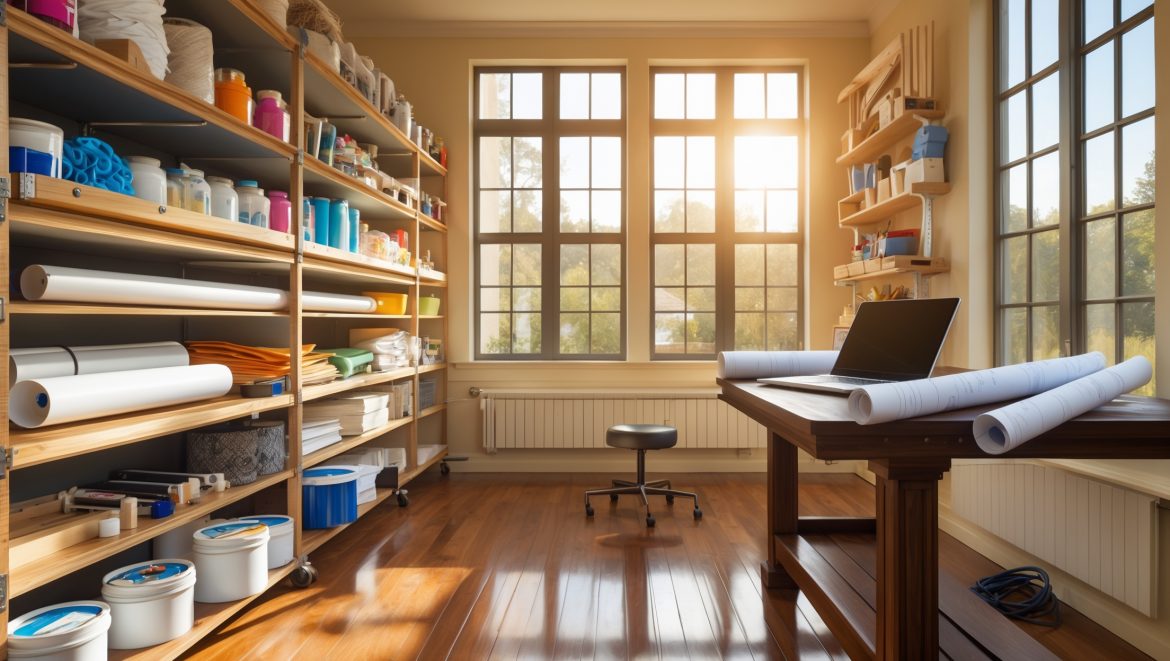Introduction: Why Compliance Matters in Your DIY Craft Studio
Setting up a DIY craft studio is an exciting journey—one filled with creative visions, carefully selected tools, and dreams of a productive, inspiring workspace. However, before you install your first storage shelf or unpack your paints, there’s a critical set of considerations that too many creators overlook: compliance with local zoning laws, permits, and legal requirements. Whether your studio is a corner of your garage, a backyard shed, or a dedicated room in your home, understanding these essentials is vital. Non-compliance can result in fines, forced shutdowns, or even legal disputes with neighbors. This comprehensive guide will walk you through every step of the compliance process, from research to final inspection. With practical tips, real-world case studies, and actionable checklists, you’ll be empowered to build your dream studio—legally and confidently.
Understanding Zoning Laws: The Foundation of Legal DIY Studios
What Are Zoning Laws?
Zoning laws regulate land use within cities and towns, designating areas for residential, commercial, industrial, or mixed-use purposes. For DIY craft studios, zoning laws determine where you can legally operate, what activities are permitted, and what modifications you can make to your property.
How Zoning Affects Home-Based Craft Studios
- Residential Zones: Most home studios are in residential areas, which may restrict certain business activities, exterior modifications, signage, or customer visits.
- Accessory Structures: Building or converting a shed, garage, or outbuilding for craft use may require special permits and must adhere to setback, height, and floor-area regulations.
- Home Occupation Rules: Many municipalities allow limited business activity at home—typically with restrictions on traffic, noise, and hazardous materials.
How to Research Your Local Zoning
- Start by visiting your city or county’s planning department website.
- Locate zoning maps and ordinances; identify your property’s zoning designation.
- Review home occupation or accessory use sections relevant to studios.
- Call or email the zoning office with specific questions—especially if you plan to sell goods, host classes, or expand your space.
Common Pitfalls and How to Avoid Them
- Assuming that small or “quiet” studios are always exempt—many areas regulate even non-commercial or hobbyist spaces.
- Skipping official approval for outbuildings or major renovations.
- Not disclosing studio use when seeking a variance or permit.
Permits: When You Need Them and How to Get Them
Types of Permits Relevant to Craft Studios
- Building Permits: Required for new construction, major remodels, or conversions (e.g., converting a garage or building a shed).
- Electrical/Plumbing Permits: Needed for adding outlets, lighting, sinks, or HVAC.
- Occupancy Permits: Sometimes needed when changing the use of a space (e.g., from storage to workspace).
- Sign Permits: If you plan visible signage for a business.
Permit Application Process: Step-by-Step
- Prepare a detailed plan, including floor layouts, safety features, and intended use.
- Submit your application to the local building or planning department, including required documents and fees.
- Respond to any requests for revisions or additional information.
- Schedule inspections as required at different project phases (e.g., framing, electrical, final).
- Receive your final approval—keep permits and inspection records for your files.
Tips for a Smooth Permit Experience
- Start early; some permits take weeks to process.
- Be honest about your intended use and any business activities.
- Work with licensed professionals for complex electrical, plumbing, or structural work.
- Don’t start construction until you have your permits in hand.
Legal Considerations Beyond Permits
Business Licenses and Home Occupation Certificates
If you plan to sell crafts, teach classes, or otherwise operate a business from your studio, you’ll likely need a business license or home occupation certificate. These documents legitimize your business and are often required by law—even for sole proprietors or hobbyists selling online.
- Check with your city’s business licensing office or website.
- Some jurisdictions have simplified processes for home-based businesses.
- Renew annually and keep your license on display if required.
Tax Implications
- Track expenses related to your studio—some may be deductible if you operate a business.
- Understand sales tax collection if you sell finished goods.
- Consult a tax professional to maximize deductions and stay compliant.
Liability and Neighbor Relations
- Inform neighbors of any construction or increase in activity to minimize complaints.
- Ensure your studio does not create noise, odor, or parking issues.
- Maintain clear boundaries, especially if your studio is near property lines.
Case Studies: Real-World Compliance in DIY Craft Studios
Case Study 1: The Backyard Shed Conversion
Sarah wanted to convert her backyard storage shed into a pottery studio. She discovered her town required a building permit for any structure with electrical upgrades and a minimum setback from the fence. By working with the city planner and a licensed electrician, Sarah secured all approvals, installed proper ventilation, and avoided a costly stop-work order.
Case Study 2: The Basement Workshop
Tom set up a woodworking shop in his basement. After a neighbor complained about noise, the city investigated and found Tom’s setup exceeded allowable decibel levels and violated home occupation limits. Tom installed soundproofing, adjusted his hours, and obtained a home occupation permit, resolving the issue and keeping his studio open.
Case Study 3: Teaching from Home
Priya started offering small-group craft classes in her living room. She learned she needed a special use permit for educational activities and had to provide an accessible entrance. After minor modifications and city inspections, Priya’s classes became a compliant, thriving part of her business.
Checklist: Ensuring Your DIY Craft Studio Is Compliant
- Identify your property’s zoning designation.
- Research home occupation and accessory use regulations.
- Draw up a studio plan with layouts and intended uses.
- Contact your local planning/building department with questions.
- Apply for necessary permits before starting work.
- Schedule and pass required inspections.
- Obtain business licenses if selling or teaching crafts.
- Understand and comply with local tax requirements.
- Communicate with neighbors about your project.
- Maintain records of permits, inspections, and licenses.
Frequently Overlooked Compliance Issues
- Accessibility: Some studios open to the public must meet ADA (Americans with Disabilities Act) requirements—ramps, door widths, accessible restrooms.
- Hazardous Materials: Storing solvents, paints, or flammable materials may trigger fire code requirements or storage limits.
- Signage: Even small signs or displays may be regulated in residential areas.
- Parking: If you expect visitors or students, provide off-street parking if possible.
Resources for Navigating Compliance
- American Planning Association – Zoning basics and resources
- Your local city or county planning/building department website
- U.S. Small Business Administration: Licenses & Permits
- Local business development centers
- Licensed contractors and architects familiar with your locality
Conclusion: Create with Confidence—Build a Compliant Craft Studio
Every great DIY craft studio begins with inspiration, but it’s built on a foundation of legal compliance. Navigating zoning laws, permits, and business licenses may seem daunting, but it’s an investment in your creative future. By taking the time to research local regulations, secure necessary approvals, and communicate openly with authorities and neighbors, you protect your investment and ensure uninterrupted creative flow. Compliance isn’t just about avoiding fines or shutdowns; it’s about building a studio you can be proud of—one that’s safe, respected, and sustainable.
Remember, every locality has its nuances, so don’t hesitate to consult with professionals or your local government. Keep thorough records of your permits, inspections, and licenses. Stay proactive about renewals and any changes to your studio’s use. Most importantly, view compliance as an empowering process—a way to protect your art, your reputation, and your peace of mind. With this guide, you’re well prepared to clear the legal hurdles and focus on what matters most: creating in a space that’s truly your own.


